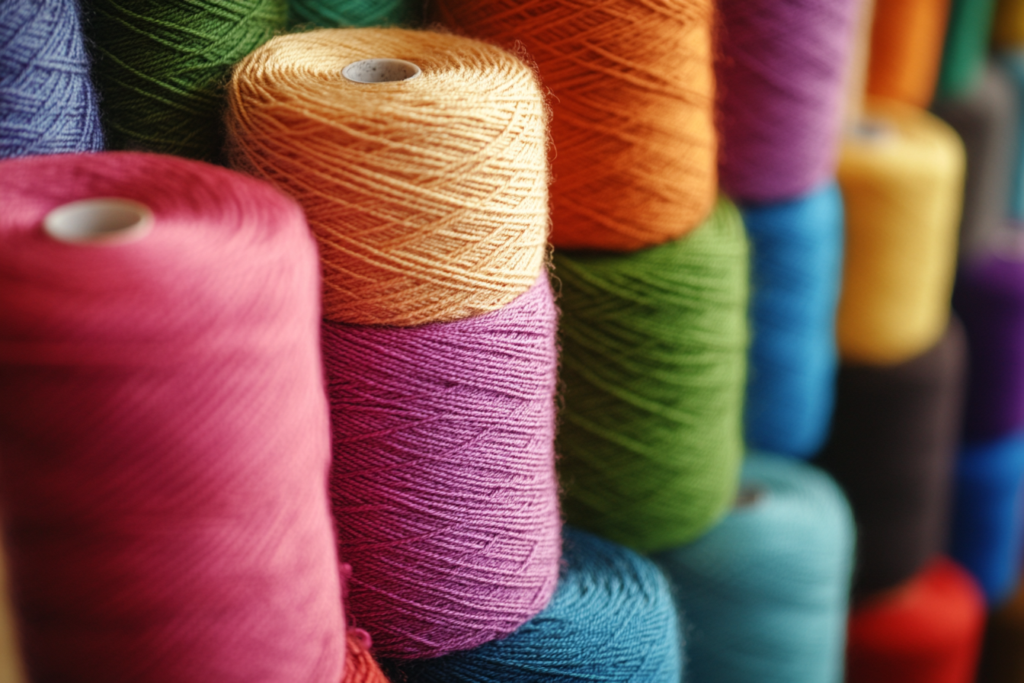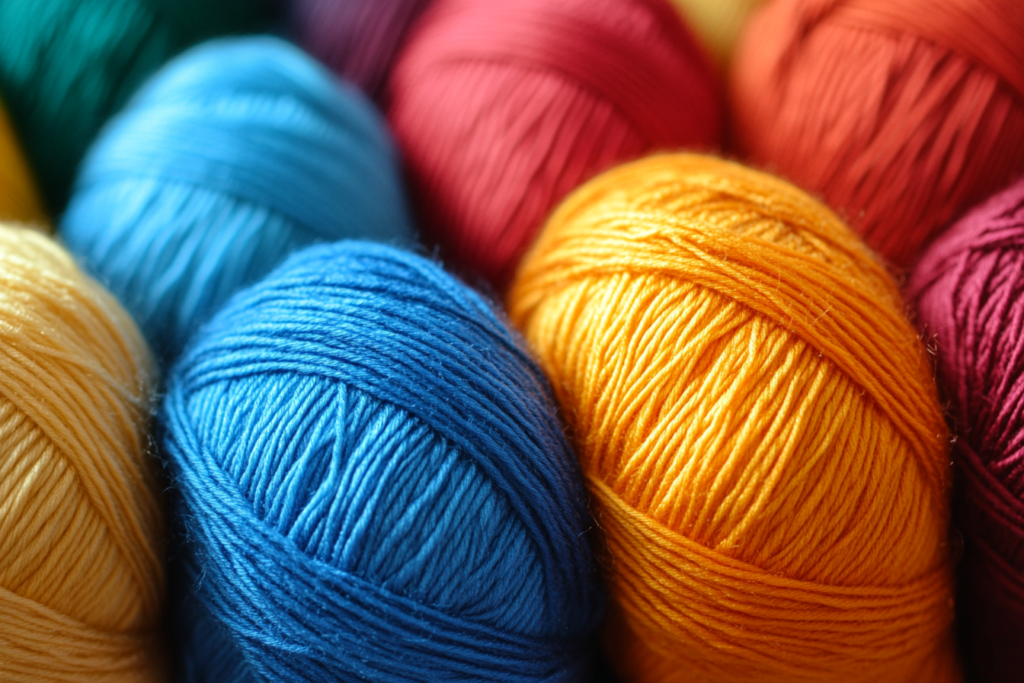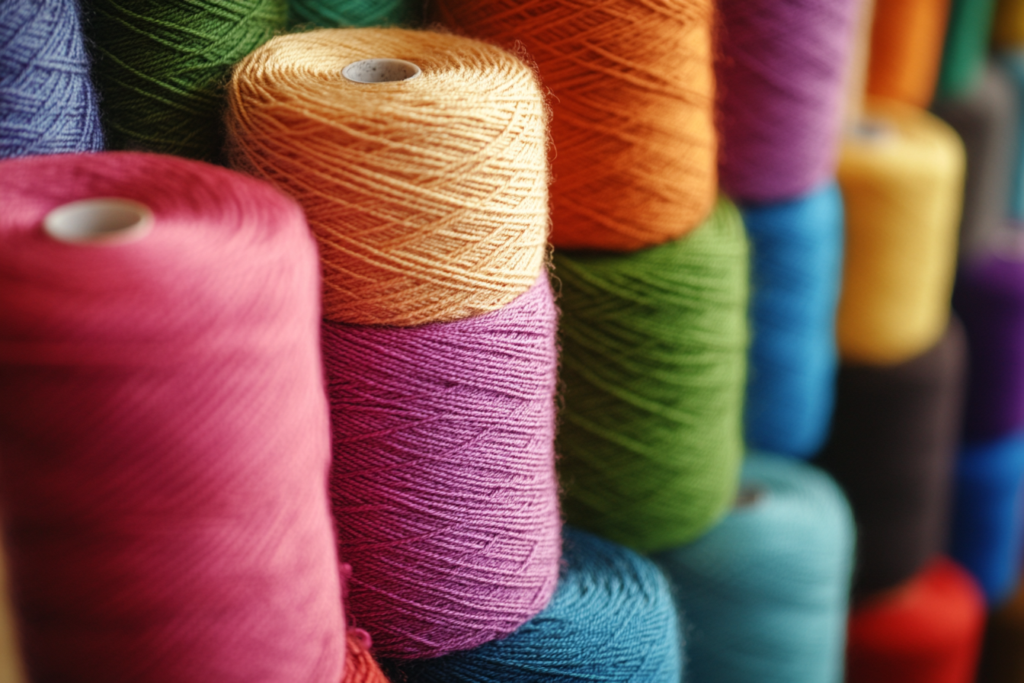Filament Yarns: What They Are and How They Are Used in Fabric Production
Meta Description: Filament yarns are long fibers used to create smooth, strong fabrics. Discover their role in garment manufacturing and the various benefits they offer in textile production.
Introduction: Understanding Filament Yarns
In textile production, filament yarns play a crucial role in creating smooth and durable fabrics. These yarns are made from long fibers, or filaments, that are continuous and typically produced in a single strand. Filament yarns are different from staple yarns, which are made from shorter fibers that are spun together. Filament yarns are used in a wide variety of applications, from luxury fabrics to performance wear, because of their unique characteristics like smoothness, strength, and versatility.


What Are Filament Yarns?
Filament yarns are long, continuous strands of material that can be produced from natural fibers like silk or synthetic fibers such as nylon, polyester, and polypropylene. These fibers are extruded into long filaments, which are then twisted together to form a continuous yarn. Filament yarns are typically much smoother and stronger than staple yarns, as they do not have the rough ends that come from shorter fibers.
Types of Filament Yarns
- Natural Filament Yarns:
- The most well-known example of natural filament yarns is silk. Silk filament yarns are harvested from the silkworm’s cocoon and are prized for their lustrous appearance, softness, and strength.
- Synthetic Filament Yarns:
- Commonly used in the textile industry today, synthetic filament yarns include materials such as nylon, polyester, polyamide, and acetate. These materials are engineered to have a variety of properties, such as moisture-wicking capabilities, UV resistance, and durability.
- Blended Filament Yarns:
- Filament yarns can also be blended with other fibers, combining the benefits of both natural and synthetic fibers. For example, a blend of polyester filament and cotton can provide the durability of polyester with the breathability of cotton.
Key Characteristics of Filament Yarns
- Smoothness:
- Filament yarns have a smooth surface because the fibers are long and continuous. This characteristic is important for creating fabrics that are silky, shiny, and soft to the touch. Silk, for instance, is known for its smooth, luxurious feel.
- Strength:
- Because they are made from long fibers, filament yarns are typically stronger and more durable than staple yarns. This makes them ideal for products that need to endure wear and tear, like outdoor gear, performance fabrics, and industrial textiles.
- Shine and Luster:
- Filament yarns, especially those made from silk and synthetic fibers, have a natural shine or luster. This makes them desirable in fashion for creating fabrics with a glossy or silky appearance, adding an element of luxury to the garment.
- Uniformity:
- Since filament yarns are continuous, they are more uniform in thickness and appearance compared to staple yarns, which can have slight variations due to their shorter lengths. This uniformity makes filament yarns perfect for high-quality fabrics with consistent texture and appearance.
Advantages of Using Filament Yarns in Garment Production
- Durability:
- Filament yarns are strong and durable, making them ideal for garments that need to withstand frequent use. Synthetic filament yarns, like nylon and polyester, are particularly known for their resilience and ability to retain their shape over time.
- Smooth Finish:
- Fabrics made from filament yarns have a smooth, polished finish that is often sought after in high-end fashion and performance fabrics. The lack of rough edges in the yarn gives the fabric a clean and sleek look.
- Lightweight:
- Filament yarns are typically lightweight, making them ideal for fabrics that need to drape well or be used in thin, airy garments like blouses, dresses, and athletic wear. Their lightweight nature also makes them suitable for layering fabrics without adding bulk.
- Versatility:
- Filament yarns can be produced in various textures, such as smooth, crinkled, or textured, giving designers flexibility in the types of fabrics they create. These yarns can be woven or knitted into a wide variety of fabrics for different applications.
- Moisture Wicking:
- Some synthetic filament yarns, such as polyester, are excellent at moisture wicking, which makes them ideal for activewear, sportswear, and outdoor gear. They help pull moisture away from the skin, keeping the wearer cool and dry.
Common Uses of Filament Yarns
- Fashion Garments:
- Filament yarns are often used in luxury fabrics such as satin, chiffon, and taffeta, where the smoothness and shine of the yarns create high-end clothing like evening wear, formal dresses, and upscale blouses.
- Performance Wear:
- Sportswear and activewear benefit from the durability and moisture-wicking properties of synthetic filament yarns. Materials like nylon and polyester are used for sports jerseys, active leggings, and performance fabrics.
- Home Textiles:
- Filament yarns are used in home textiles, including curtains, upholstery, and bedding. Their smooth, durable nature ensures long-lasting and easy-to-maintain home fabrics.
- Industrial Textiles:
- Because of their strength, filament yarns are used in a range of industrial textiles, including ropes, nets, and tents, where durability and strength are paramount.
Conclusion: The Importance of Filament Yarns in Textile Production
Filament yarns are a fundamental component of the textile industry, offering strength, smoothness, and versatility. Their continuous nature makes them ideal for creating high-quality fabrics used in a wide range of garments and applications. From luxurious fashion items to durable performance wear, filament yarns are essential for producing fabrics that are both aesthetically appealing and functional.
Whether made from natural fibers like silk or synthetic materials such as polyester and nylon, filament yarns continue to be a driving force in the creation of modern textiles, contributing to both the fashion industry and industrial applications.



